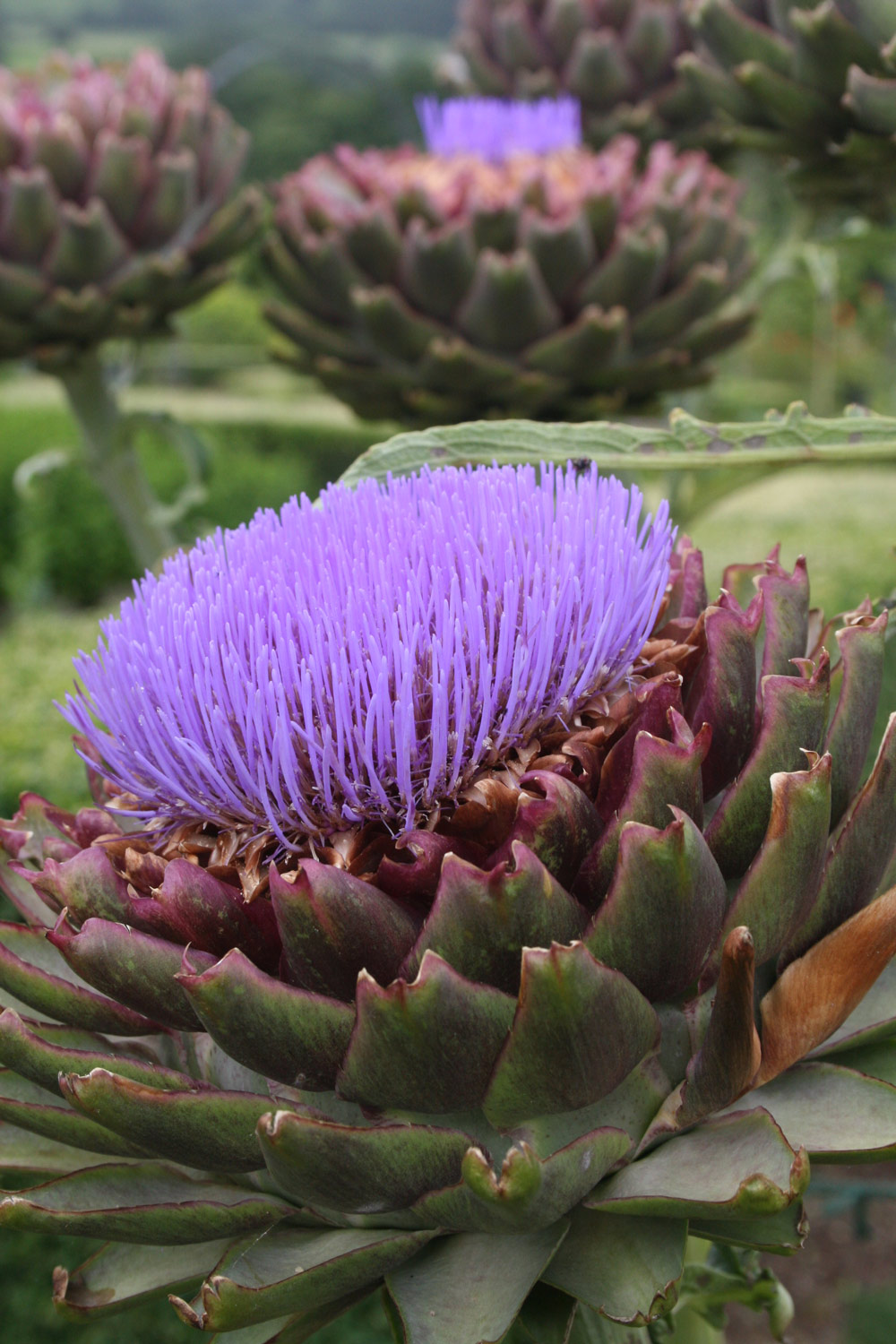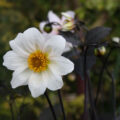by Sally Gregson
ONE of the most structural ‘vegetables’ in the kitchen garden, and indeed in garden borders in general, is the globe artichoke.
It powers up from a resting rosette comprising clumps of spikey, silvery leaves. In the centre the flower bud is fat and full of the promise of delicious meals to come. It achieves that perfect moment when the outer scales are still fairly soft and the middle of the bud is developing.
Cut off the whole head, place it in a pan of boiling salted water and simmer it until the base is quite tender. Drain it, invert the whole ‘flower’, then detach each scale and dip it in melted butter. An oil and vinegar dressing is just as good. When you have reached the middle, pull off the excess hairy part with your knife and fork. Then, the part you’ve been waiting for is ready. Cut up the flat disc, the ‘heart’, and relish its flavour with the butter and salt and pepper.
Globe artichoke plants prefer a well-drained soil in full sun. They tend to rot in rich or damp soil and fail to come back in the spring.
The flowers, if you can resist eating the buds, are a tall, elegant addition to any border whether it is in the vegetable garden or not. The flower buds open to loose, lavender flowers that are a magnet for every butterfly and bee in the garden. When they are over the whole structure dies back to the crown which then makes more of itself.
A good crop can be grown from seed sown in spring, pricked out and over-wintered somewhere frost free. Over the centuries artichoke growers have selected out some especially tasty clones. There’s the French variety ‘Vert de Laon’ which has round, fat heads that are particularly flavoursome. They are propagated by offsets which should be planted out in late spring. These young plants should be available in good local nurseries or online.











Leave a Reply